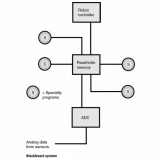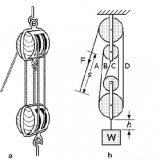POTENTIAL FIELD – 21109
A potential field is a rendition of robot behavior or characteristics within a specific work area. Such fields are commonly rendered as vector arrays in a two-dimensional (2-D) coordinate system. The vectors can represent any quantity that affects the robot, or that the robot exhibits, such as magnetic field strength, velocity, or acceleration.More complex potential fields exist in three-dimensional (3-D) space. The following examples, and the accompanying illustrations, involve 2-D space (a flat surface)
for simplicity.
Uniform field
In a uniform potential field, the vectors all point in the same direction and have the same magnitude, regardless of the location of the robot. All of the vectors point parallel to the work surface.An example of this sort of field is a steady wind acting on a robot. Another example is Earth’s magnetic field in a work space that covers only a small part of the surface of the planet (for example, a few square kilometers), and which is located near the geomagnetic equator where the lines of flux are parallel to the surface.
Attractive radial field
An attractive radial potential field contains vectors that all point inward toward the origin, or center point, represented by (0, 0) in the Cartesian coordinate system. The vector magnitude might depend on the distance from the origin, but not necessarily.An example of an attractive radial field is a mapping of the force that exists as a robot carrying an electrically positive charge operates in the vicinity of an object carrying an electrically negative charge. In this case, the vector intensity increases as the distance between the robot and the origin decreases.
Repulsive radial field
A repulsive radial potential field contains vectors that all point outward away from the origin.As with the attractive field, vector magnitude might depend on the distance from the origin, but not necessarily. An example of a repulsive radial field is a mapping of the force that exists if a robot carrying an electrically positive charge operates in the vicinity of an object carrying an electrically positive charge (that is, the same polarity as the robot). In this case, the vector intensity increases as the distance between the robot and the origin decreases.
Tangential field
A tangential potential field contains vectors that point either clockwise or counterclockwise in concentric circles around the origin. The vector magnitude might vary depending on the distance from the origin, but not necessarily. An example of this type of field is the wind circulation surrounding an intense tropical hurricane. Another example is magnetic flux surrounding a straight wire carrying a steady, direct current, when the wire passes through the 2-D work surface at a right angle. In both of
these cases, the vector intensity increases as the distance between the robot and the origin decreases.
Perpendicular field
In a perpendicular potential field, also called an orthogonal potential field, the vectors all point in the same direction and have the same magnitude, regardless of the location of the robot. All of the vectors point at a right angle to the work surface. An example of this sort of field is Earth’s magnetic field in the immediate vicinity of either geomagnetic pole. Another example is the mapping of the force that occurs if a robot carrying an electric charge operates on a work surface that also carries an electric charge. If the robot and the surface have like charges, the force is repulsive (the vectors all point straight up); if the robot and the surface have opposite charges, the force is attractive (the vectors all point straight down).




